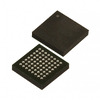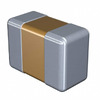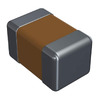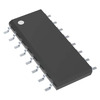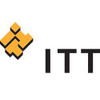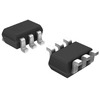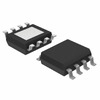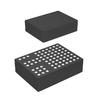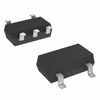Mastering the STM32F767ZIT6: Pinout, Applications, and Datasheet Details
The STM32F767ZIT6 microcontroller by STMicroelectronics stands as a high-performance solution tailored for advanced embedded systems. Built around the powerful Arm Cortex-M7 core, this microcontroller operates at 216 MHz, offering remarkable computational power and DSP capabilities. With 2 MB of Flash memory, extensive peripherals, and features like an Art Accelerator, JPEG codec, and SDRAM support, it enables efficient data handling and rich graphical processing. This article explores its key features, technical specifications, and wide-ranging applications across industries, from medical devices to industrial automation and smart home technologies.Catalog
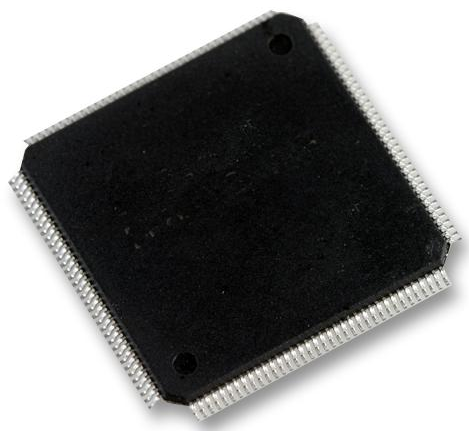
Description of STM32F767ZIT6 Microcontroller
Embedded in the world of microelectronics, the STM32F767ZIT6 microcontroller seamlessly combines formidable performance with DSP functionalities, driven by the potent Arm Cortex-M7 core clocking at 216 MHz and equipped with a floating-point unit (FPU). Its intricate architecture is fortified by 2 MB of Flash memory and an array of sophisticated peripherals. Among these are three 12-bit ADCs, two DACs, an RTC, twelve 16-bit timers, and advanced communication interfaces, including RNG.
Apart from its impressive core capabilities, this microcontroller excels in high-end graphics and data management. Bolstered by a flexible memory control interface, it also supports Quad-SPI, a camera interface, a TFT-LCD controller, Chrom-ART Accelerator, and HDMI-CEC. These features collectively paint a picture of a microcontroller tailored for complex graphic and data-demanding applications, thus making it a preferred solution for high-performance industrial control systems, consumer electronics, and emerging smart home technologies.
The industrial landscape benefits enormously from this microcontroller, leveraging its comprehensive features and temperature resilience. For instance, its three 12-bit ADCs and two DACs are requisite in precision instrumentation, facilitating meticulous signal conversions. The twelve 16-bit timers are major in orchestrating operational control, ensuring seamless process flows. Furthermore, an operating temperature range of -40 to +105 °C elevates its reliability, mostly in demanding industrial environments.
Features of STM32F767ZIT6
|
Feature |
Description |
|
Core |
216 MHz Arm Cortex-M7 core with double-precision floating
point unit (FPU) and adaptive real-time accelerator (ART Accelerator). |
|
Flash Memory |
2 Mbytes of Flash memory. |
|
SRAM |
512 Kbytes of SRAM. |
|
External Memory Interface |
Supports SDRAM, SRAM, NOR, NAND, and PSRAM. |
|
JPEG Codec |
JPEG codec for image compression and decompression. |
|
Graphics Acceleration |
Chrom-ART Accelerator for 2D graphics acceleration. |
|
TFT-LCD Controller |
Up to 24-bit parallel RGB interface. |
|
Camera Interface |
Supports CMOS sensors. |
|
Quad-SPI Interface |
For high-speed serial Flash memory access. |
|
SPDIFRX Interface |
Supports digital audio input. |
|
HDMI-CEC Interface |
Consumer electronics control. |
|
Low-Power RTC |
With calendar and alarm functions. |
|
True Random Number Generator (RNG) |
Provides secure random number generation. |
|
Communication Interfaces |
USB OTG HS and FS, Ethernet MAC, CAN, I2C, SPI, I2S,
UART, SAI, and SDMMC. |
|
Analog Peripherals |
Three 12-bit ADCs, two 12-bit DACs, and a digital filter
for sigma-delta modulators (DFSDM). |
|
Timers |
Twelve general-purpose 16-bit timers, two general-purpose
32-bit timers, two basic timers, two advanced-control timers, low-power
timer, SysTick. |
|
Operating Temperature |
–40 to +105 °C. |
|
Power Supply |
Operates from 1.7 to 3.6 V. |
|
Package |
LQFP-144 package with 114 I/O pins. |
Specifications of STM32F767ZIT6
|
Type |
Parameter |
|
Lifecycle Status |
ACTIVE (Last Updated: 7 months ago) |
|
Factory Lead Time |
12 Weeks |
|
Mounting Type |
Surface Mount |
|
Package / Case |
144-LQFP |
|
Surface Mount |
YES |
|
Number of Pins |
144 |
|
Manufacturer Package Identifier |
LQFP144-1A |
|
Data Converters |
A/D 24x12b; D/A 2x12b |
|
Number of I/Os |
114 |
|
Operating Temperature |
-40°C ~ 85°C TA |
|
Packaging |
Tray |
|
Series |
STM32F7 |
|
JESD-609 Code |
e3 |
|
Part Status |
Active |
|
Moisture Sensitivity Level (MSL) |
3 (168 Hours) |
|
Number of Terminations |
144 |
|
Terminal Finish |
Matte Tin (Sn) |
|
Terminal Position |
QUAD |
|
Terminal Form |
GULL WING |
|
Supply Voltage |
3.3V |
|
Terminal Pitch |
0.5mm |
|
Frequency |
216MHz |
|
Base Part Number |
STM32F767 |
|
Interface |
CAN, EBI/EMI, Ethernet, I2C, IrDA, LIN, SPI, UART, USART,
USB |
|
Memory Size |
2MB |
|
Oscillator Type |
Internal |
|
RAM Size |
512K x 8 |
|
Voltage - Supply (Vcc/Vdd) |
1.7V ~ 3.6V |
|
uPs/uCs/Peripheral ICs Type |
MICROCONTROLLER, RISC |
|
Core Processor |
ARM® Cortex®-M7 |
|
Peripherals |
Brown-out Detect/Reset, DMA, I2S, LCD, POR, PWM, WDT |
|
Program Memory Type |
FLASH |
|
Core Size |
32-Bit |
|
Program Memory Size |
2MB 2M x 8 |
|
Connectivity |
CANbus, EBI/EMI, Ethernet, I2C, IrDA, LINbus,
MMC/SD/SDIO, QSPI, SAI, SPDIF, SPI, UART/USART, USB OTG |
|
Bit Size |
32 |
|
Has ADC |
YES |
|
DMA Channels |
YES |
|
Data Bus Width |
32b |
|
PWM Channels |
YES |
|
Number of Timers/Counters |
15 |
|
Address Bus Width |
26 |
|
Core Architecture |
ARM |
|
Number of A/D Converters |
3 |
|
Number of ADC Channels |
24 |
|
Max Junction Temperature (Tj) |
105°C |
|
Number of I2C Channels |
4 |
|
Ambient Temperature Range High |
85°C |
|
Number of SPI Channels |
6 |
|
Number of Ethernet Channels |
1 |
|
Height |
1.6mm |
|
Length |
20mm |
|
REACH SVHC |
No SVHC |
|
RoHS Status |
ROHS3 Compliant |
Pinout of STM32F767ZIT6

CAD Model of STM32F767ZIT6
Symbol

Footprint

3D Model
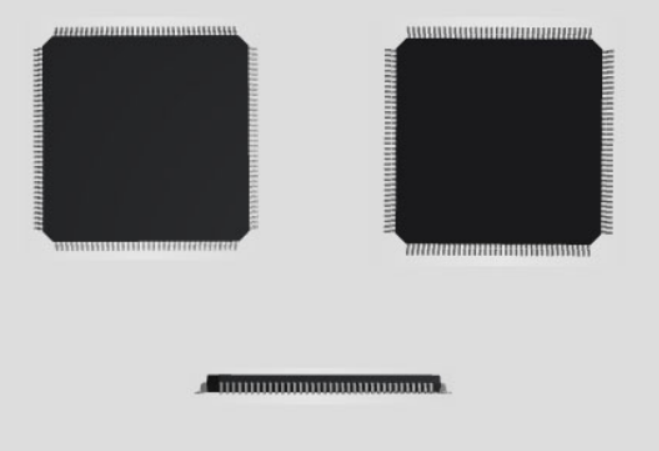
Applications of the STM32F767ZIT6
The STM32F767ZIT6 illustrates its versatility across a wide array of sectors, presenting a broad spectrum of applications and innovative potential.
Motor Control
This microcontroller shines in motor control applications using PWM timers, ADCs, and DSP algorithms. These elements empower it to efficiently manage various motor types, ensuring precise control and optimized performance. Practical implementations include automotive systems, where precision aids in energy conservation. Robotics, delivering meticulous motor regulation for enhanced functionality. Household appliances, ensuring accurate and efficient motor operations.
Medical Devices
In the medical sector, the STM32F767ZIT6 stands out for devices like pulse oximeters and ultrasound scanners. Its precise data processing enhances diagnostic accuracy and reliability to gain your trust. Specific examples include patient monitoring systems, and providing accurate medical data. Clinical tools, delivering fine-grained control over sensor data acquisition and processing.
Industrial Automation
The STM32F767ZIT6 finds extensive use in industrial environments for PLCs, HVAC systems, and printers. Its ability to handle processing ensures high reliability and stability, which is major for automation and control systems. Examples of its applications include manufacturing plants, where it supports the seamless operation of automated assembly lines. Control systems, maintaining synchronization and timing in complex industrial processes.
Home Audio Systems
In-home audio systems, the STM32F767ZIT6 enhance advanced soundbars and smart speakers. It integrates high-quality audio interfaces and displays to elevate your experience significantly. Key benefits include superior audio quality, and meeting growing consumer expectations for sophisticated entertainment. Intuitive control interfaces, ensure an immersive and accessible experience.
Mobile Applications
Efficient power management and sensor integration make the STM32F767ZIT6 ideal for mobile applications such as smartwatches and drones. Its features extend battery life, which is a major aspect of portable devices. Usage examples include smartwatches, providing long battery life and optimal functionality. Drones, handle complex sensor data for enhanced your satisfaction.
Internet of Things (IoT)
In the world of IoT, the STM32F767ZIT6 connects smart devices and processes vast data quantities, fitting well within diverse scenarios like smart homes, smart cities, and industrial IoT. Actual applications include smart home systems, managing various devices for seamless connectivity and control. Urban smart infrastructure, promoting efficient resource management and urban planning advancements.
Manufacturer of STM32F767ZIT6
STMicroelectronics is a remarkable player in semiconductor technologies, offering tailored solutions for mobility, energy management, and IoT. Headquartered in Switzerland, this French-Italian company excels in varied applications including motor control, medical devices, industrial systems, audio appliances, mobile gadgets, and IoT solutions. With operations in 35 countries and a workforce exceeding 46,000, STMicroelectronics combines an extensive technology portfolio with a commitment to innovation and environmental sustainability.
STMicroelectronics demonstrates a remarkable ability to cater to varied applications. For instance, in motor control, the efficiency and precision of their semiconductor solutions have led to notable advancements in electric vehicles and automation. Optimized motor control can spark exceptional gains in performance and energy savings, mirroring comparable industrial advancements. In the medical device sector, STMicroelectronics' innovations support the development of sophisticated diagnostic and therapeutic tools. For example, non-invasive imaging technologies and portable monitoring systems illustrate how these semiconductor solutions enhance patient care and safety.
One of the core pillars supporting STMicroelectronics' success is its relentless pursuit of innovation. Through substantial investment in R&D and strategic collaborations, the company continuously evolves its product offerings. Their work in IoT solutions, for instance, incorporates cutting-edge technologies that enable smarter, more connected environments. This progression mirrors how successive generations of mobile technology have shaped consumer expectations and usage patterns. Moreover, STMicroelectronics' dedication to staying ahead of technological curves signifies a broader industry trend. Continuous improvement and innovative strides are not merely ambitions but useful for maintaining a competitive edge.
Components with Comparable Specifications
|
Part Number |
Manufacturer |
Package / Case |
Number of Pins |
Core Architecture |
Data Bus Width |
Number of I/O |
Interface |
Memory Size |
Supply Voltage |
|
STM32F767ZIT6 |
STMicroelectronics |
144-LQFP |
144 |
ARM |
32 b |
114 |
CAN, EBI/EMI, Ethernet, I2C, IrDA, LIN, SPI, UART, USART,
USB |
2 MB |
3.3 V |
|
STM32F429ZIT6 |
STMicroelectronics |
144-LQFP |
144 |
ARM |
32 b |
114 |
CAN, EBI/EMI, Ethernet, I2C, I2S, IrDA, LIN, SDIO, SPI,
UART, USART, USB |
2 MB |
3.3 V |
|
MK66FN2M0VLQ18 |
NXP USA Inc. |
144-LQFP |
144 |
ARM |
32 b |
114 |
CAN, EBI/EMI, Ethernet, I2C, I2S, IrDA, LIN, SDIO, SPI,
UART, USART, USB |
2 MB |
3.3 V |
|
STM32F437ZIT7TR |
STMicroelectronics |
144-LQFP |
144 |
ARM |
- |
114 |
CAN, EBI/EMI, Ethernet, I2C, IrDA, LIN, SPI, UART, USART,
USB |
2 MB |
3.3 V |
|
STM32F437ZIT7 |
STMicroelectronics |
144-LQFP |
- |
- |
- |
100 |
- |
- |
3.3 V |
Datasheet PDF
STM32F767ZIT6 Datasheets:
STM32F765xx,767xx, 768Ax, 769xx.pdf
STM32F429ZIT6 Datasheets:
STM32F427xx, STM32F429xx Datasheet.pdf
MK66FN2M0VLQ18 Datasheets:
Frequently Asked Questions [FAQ]
1. How can I get started with the STM32F767ZIT6?
Begin with STM32CubeIDE for development and debugging, along with STM32CubeMX for configuration. The Nucleo-144 board featuring the STM32F767ZIT6 is a popular choice for prototyping. Exploring comprehensive online tutorials and engaging in community projects can significantly expedite the learning process. Moreover, the thrill of hands-on trial and error often deepens understanding of the device’s intricacies, making challenges a catalyst for learning.
2. How can I interface the STM32F767ZIT6 with Ethernet and Wi-Fi?
For Ethernet connectivity, the STM32F767ZIT6 supports 10/100 Mbit/s through an external PHY chip. The LwIP stack facilitates communication. To incorporate Wi-Fi, establish a connection via SPI, UART, or USB using an external module. These modules are supported by STM32CubeWiFi middleware. Complement these setups with practical case studies that showcase efficient network performance. These examples unravel the complexities of applications and guide understanding.
3. What is the state of the GPIO of the STM32F767ZIT6 during reset?
During reset, most GPIOs are configured as input/floating. Specific pins, such as BOOT0 and BOOT1, have defined pull-up/pull-down settings. NRST is configured as input/pull-up with external reset mechanisms in place. Familiarity with these configurations aids in designing reliable reset schematics in complex systems. It resonates with established manufacturing practices that ensure embedded applications’ robustness and consistency.
About us
ALLELCO LIMITED
Read more
Quick inquiry
Please send an inquiry, we will respond immediately.

LM741CM Operational Amplifier Guide: Datasheet, Circuit Designs, and Application Scenarios
on October 17th
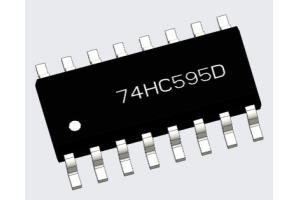
74HC595D Shift Register Breakdown: Pinout, Datasheet, and System Diagram Explained
on October 17th
Popular Posts
-

What is GND in the circuit?
on January 1th 3272
-

RJ-45 Connector Guide: RJ-45 Connector Color Codes, Wiring Schemes, R-J45 Applications, RJ-45 Datasheets
on January 1th 2815
-

Understanding Power Supply Voltages in Electronics VCC, VDD, VEE, VSS, and GND
on November 20th 2640
-

Fiber Connector Types: SC Vs LC And LC Vs MTP
on January 1th 2265
-

Comparison Between DB9 and RS232
on January 1th 1882
-

What Is An LR44 Battery?
Electricity, that ubiquitous force, quietly permeates every aspect of our daily lives, from trivial gadgets to life-threatening medical equipment, it plays a silent role. However, truly grasping this energy, especially how to store and efficiently output it, is no easy task. It is against this background that this article will focus on a type of coin cell battery that may seem insignificant on the...on January 1th 1846
-

Understanding the Fundamentals:Inductance Resistance, andCapacitance
In the intricate dance of electrical engineering, a trio of fundamental elements takes center stage: inductance, resistance, and capacitance. Each bears unique traits that dictate the dynamic rhythms of electronic circuits. Here, we embark on a journey to decipher the complexities of these components, to uncover their distinct roles and practical uses within the vast electrical orchestra. Inductan...on January 1th 1808
-

What Is RF and Why Do We Use It?
Radio Frequency (RF) technology is a key part of modern wireless communication, enabling data transmission over long distances without physical connections. This article delves into the basics of RF, explaining how electromagnetic radiation (EMR) makes RF communication possible. We will explore the principles of EMR, the creation and control of RF signals, and their wide-ranging uses. The article ...on January 1th 1801
-

CR2430 Battery Comprehensive Guide: Specifications, Applications and Comparison to CR2032 Batteries
What is CR2430 battery ?Benefits of CR2430 BatteriesNormCR2430 Battery ApplicationsCR2430 EquivalentCR2430 VS CR2032Battery CR2430 SizeWhat to look for when buying the CR2430 and equivalentsData Sheet PDFFrequently Asked Questions Batteries are the heart of small electronic devices. Among the many types available, coin cells play a crucial role, commonly found in calculators, remote controls, and ...on January 1th 1799
-

Comprehensive guide to hFE in transistors
Transistors are crucial components in modern electronic devices, enabling signal amplification and control. This article delves into the knowledge surrounding hFE, including how to select a transistor's hFE value, how to find hFE, and the gain of different types of transistors. Through our exploration of hFE, we gain a deeper understanding of how transistors work and their role in electronic circu...on November 20th 1782

